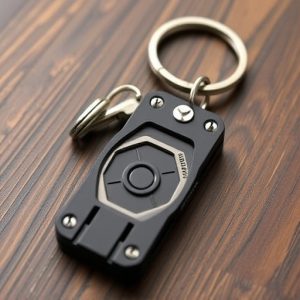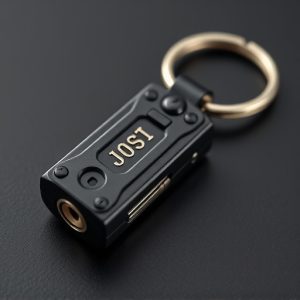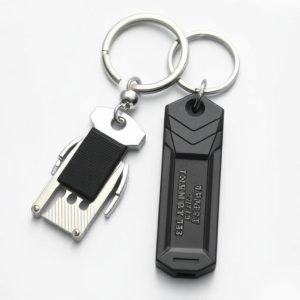Unveiling Hidden Designs: State Laws on Self-Defense Keychains
In the US, laws regarding hidden self-defense keychains vary significantly state-to-state, making it…….
In the US, laws regarding hidden self-defense keychains vary significantly state-to-state, making it crucial for users and manufacturers alike to stay informed about local regulations. These laws hinge on factors like "deadly force" definitions, permit requirements, and weapon restrictions, determining last-resort vs. broader permissible use. Staying abreast of legislative changes ensures compliance and safety when carrying such keychains in public. Innovations in Hidden Self Defense Keychain Designs must navigate a complex web of state-specific regulations to offer discreet yet powerful protection while adhering to legal limits.
“In today’s diverse legal landscape, understanding the legality of self-defense keychains varies significantly from state to state. This comprehensive guide, ‘Understanding Self-Defense Keychain Legalities: A State-by-State Analysis,’ explores the intricate web of regulations surrounding these compact defense tools. Unveiling hidden designs and creative solutions, we delve into the essential elements that define legal self-defense keychain possession. From navigating criminal codes to real-world case studies, this article equips you with insights into the evolving world of self-defense keychains and their hidden designs.”
- Understanding Self-Defense Keychain Legalities: A State-by-State Analysis
- Unveiling Hidden Designs: Exploring Legal Limits and Creative Solutions
- Essential Elements: What Makes a Self-Defense Keychain Legal?
- Navigating Criminal Code: Rights and Responsibilities of Carrying Self-Defense Tools
- Case Studies: Real-World Scenarios Shaping Self-Defense Keychain Legislation
Understanding Self-Defense Keychain Legalities: A State-by-State Analysis
In the United States, laws surrounding self-defense keychains vary significantly from state to state, making it crucial for individuals considering carrying such a tool to understand their local regulations. The legalities of hidden self-defense keychain designs often depend on factors like the specific state’s definition of “deadly force,” permit requirements, and restrictions on the type of weapon allowed. For instance, some states may only permit the use of keychains as a last resort when other means of escape or defense are unavailable, while others might allow them under broader circumstances.
Each state has its own set of rules regarding what constitutes an acceptable self-defense device, with some explicitly banning hidden weapons and others requiring permits or registration. The legal landscape can be complex, especially since many states have recently introduced or updated legislation to address the use of personal defense tools like keychains. Staying informed about these changes is essential for ensuring compliance and safety when carrying a self-defense keychain in public.
Unveiling Hidden Designs: Exploring Legal Limits and Creative Solutions
In the realm of self-defense keychains, creativity often meets legal constraints, leading to an intriguing dance between innovation and regulation. Unveiling hidden designs on such compact tools can be a double-edged sword. While some innovative manufacturers embrace discreet yet potent features, ensuring users have access to immediate protection, they must navigate a labyrinthine web of legal requirements. Each state has its own set of rules regarding the functionality and appearance of self-defense devices, especially when incorporated into everyday items like keychains.
For instance, hidden Self Defense Keychain Designs might include tactical tools with various locking mechanisms or even concealed pepper spray dispensers. However, these creative solutions must comply with local laws pertaining to weapon possession and carry restrictions. Some states may permit such devices for personal protection only if they meet specific safety and size criteria. Therefore, manufacturers and users alike must stay informed about the legal landscape to ensure these innovative self-defense tools remain accessible while adhering to the prescribed limits.
Essential Elements: What Makes a Self-Defense Keychain Legal?
When it comes to legality, a self-defense keychain must possess certain key elements to be considered effective and compliant. Firstly, it should be designed with discreetness in mind—hidden Self Defense Keychain Designs are preferred as they allow users to carry a defense tool without drawing unnecessary attention. This discreteness is crucial for unexpected situations where the element of surprise is vital.
Secondly, the keychain must meet specific legal requirements set by individual states. These requirements often include factors like allowed tools (e.g., certain types of knives or pepper spray), age restrictions on users, and public spaces where it’s permissible to carry such a device. Understanding these laws is essential to ensure your self-defense keychain remains within the boundaries of legality.
Navigating Criminal Code: Rights and Responsibilities of Carrying Self-Defense Tools
Navigating state laws regarding self-defense tools, such as hidden keychain designs, is crucial for ensuring compliance and understanding one’s rights and responsibilities. The Criminal Code varies across states, defining what constitutes legal self-defense and regulating the carrying of defensive instruments. It’s essential to review these laws to comprehend permissible defenses and the specific requirements for keychain self-defense devices.
Keychain self-defense tools can offer individuals a sense of security, but users must be aware of their legal standing. Some states explicitly allow concealed weapons, including keychains with defensive features, while others have stringent regulations or outright prohibit such devices. Hidden Self Defense Keychain Designs, for instance, should adhere to size, functionality, and material restrictions. Understanding these nuances is vital to ensure a lawful and responsible approach to personal safety.
Case Studies: Real-World Scenarios Shaping Self-Defense Keychain Legislation
In recent years, case studies involving hidden self-defense keychains have played a significant role in shaping legislation surrounding their use. These real-world scenarios highlight the delicate balance between personal safety and public safety concerns. For instance, several states have had to address issues of unexpected attacks using these compact self-defense tools, leading to debates on their classification as legal defense mechanisms. Some cases involved individuals who faced dangerous situations while alone in public places, finding solace in the discreet nature of hidden keychain designs that quickly transformed into effective weapons.
These studies have led to varying legal requirements, with some states allowing for unrestricted carry while others impose restrictions based on size and functionality. The evolution of self-defense keychain legislation is a testament to the dynamic relationship between personal freedom and public order. As manufacturers introduce innovative Hidden Self Defense Keychain Designs, lawmakers are tasked with ensuring these tools remain accessible for those in need without compromising public safety standards.
In exploring the legal requirements for self-defense keychains, we’ve uncovered a complex web of state regulations. Understanding these laws is crucial for individuals seeking to empower themselves with creative and compliant self-defense tools. The balance between personal safety and public safety is delicate, but through knowledge and careful consideration, one can navigate this landscape. Remember that staying informed about your state’s specific laws regarding hidden self-defense keychain designs is essential to ensuring you remain within legal boundaries while prioritizing your well-being.


